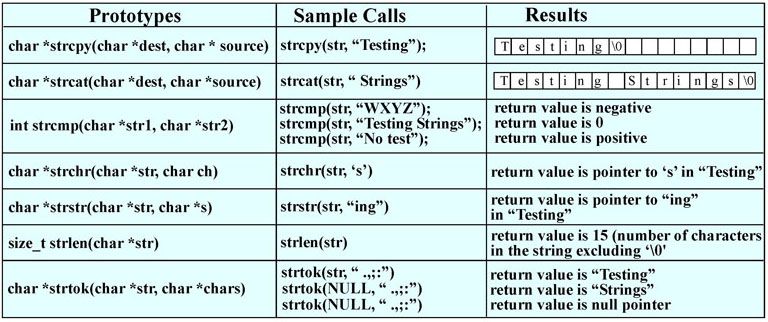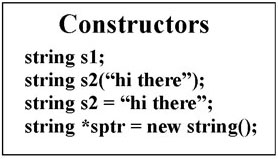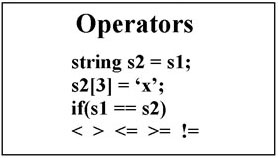Strings are implemented as an array of characters with the first character treated as a 1-byte integer giving the length of the string. Thus Pascal strings are limited to a maximum of 255 characters.

In Java strings are implemented as the String class with a variety of functions which can be used to manipulate the string.

Strings are implemented as an array of characters. The end of a string is marked with a null terminator (ASCII character zero). Functions to manipulate the Kernigan and Ritchie (named for the authors of C) strings are defined in the header file string.h

The C++ Standard Template Library includes a template class for strings with a variety of functions which can be used to manipulate the string. Functions to manipulate the C++ template strings are defined in the header file string (note that the .h is omitted and you must also add after the #include statement, the statement using namespace std;




